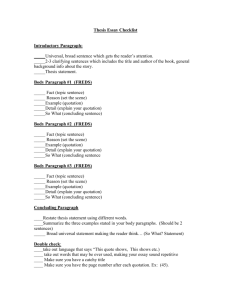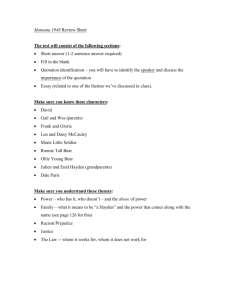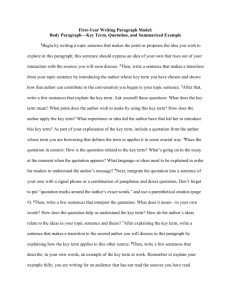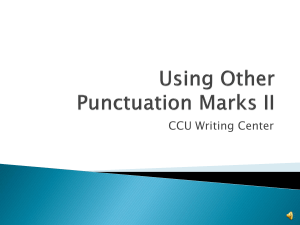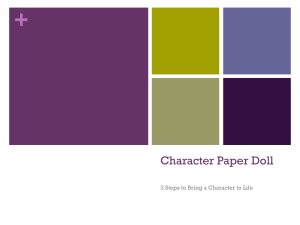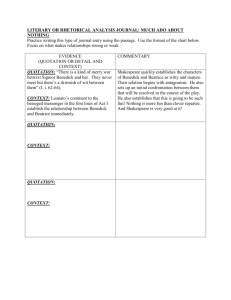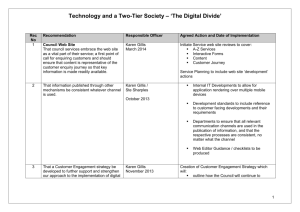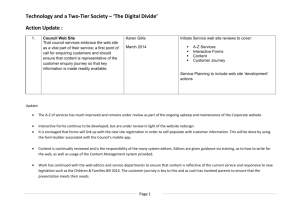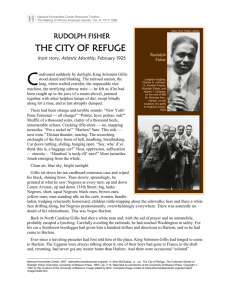WRITING NOTE CARDS Use 4 by 6-inch or 5 by 8
advertisement
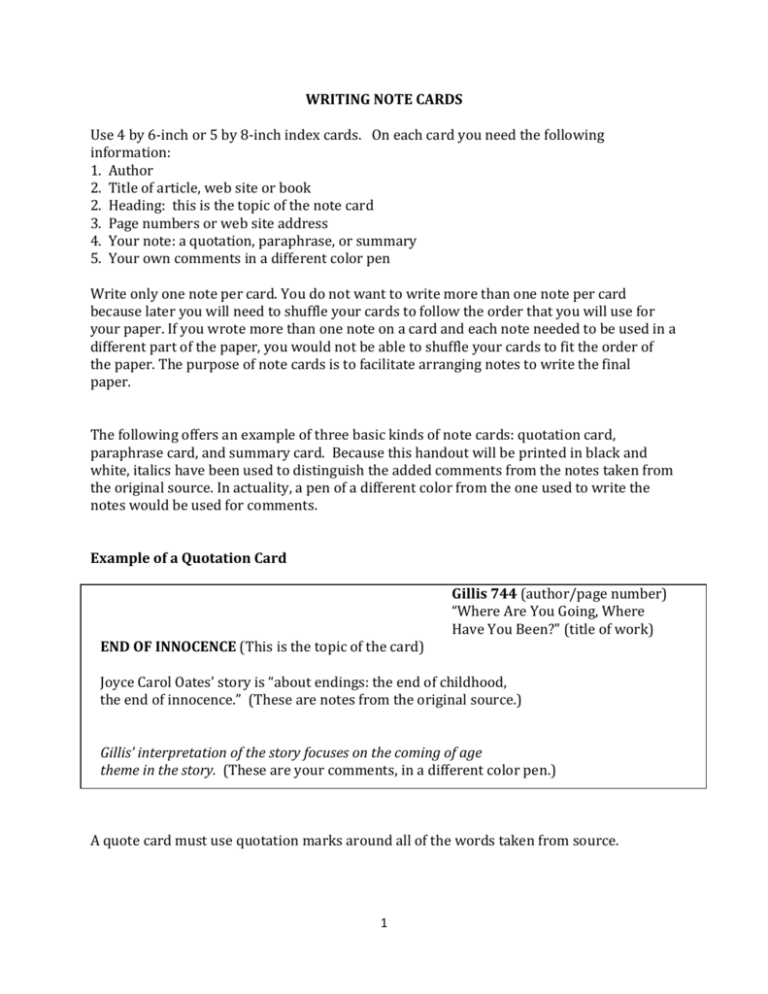
WRITING NOTE CARDS Use 4 by 6-inch or 5 by 8-inch index cards. On each card you need the following information: 1. Author 2. Title of article, web site or book 2. Heading: this is the topic of the note card 3. Page numbers or web site address 4. Your note: a quotation, paraphrase, or summary 5. Your own comments in a different color pen Write only one note per card. You do not want to write more than one note per card because later you will need to shuffle your cards to follow the order that you will use for your paper. If you wrote more than one note on a card and each note needed to be used in a different part of the paper, you would not be able to shuffle your cards to fit the order of the paper. The purpose of note cards is to facilitate arranging notes to write the final paper. The following offers an example of three basic kinds of note cards: quotation card, paraphrase card, and summary card. Because this handout will be printed in black and white, italics have been used to distinguish the added comments from the notes taken from the original source. In actuality, a pen of a different color from the one used to write the notes would be used for comments. Example of a Quotation Card END OF INNOCENCE (This is the topic of the card) Gillis 744 (author/page number) “Where Are You Going, Where Have You Been?" (title of work) Joyce Carol Oates’ story is “about endings: the end of childhood, the end of innocence.” (These are notes from the original source.) Gillis’ interpretation of the story focuses on the coming of age theme in the story. (These are your comments, in a different color pen.) A quote card must use quotation marks around all of the words taken from source. 1 Example of a Paraphrase Card Gillis 744 “Where Are You Going, Where Have You Been?" Symbolism: Kitchen Door The door serves as a passage between family and the world of terror; the final scene at the door is filled with tension. Gillis emphasizes the importance of spatial dimensions in the story. The door is one of the boundaries in the story that divides spaces in the story, in this case, the world inside Connie’s home and the world outside where Connie flirts with adventure. Example of a Summary Card This summary card condenses information found in a lengthy paragraph and highlights the main point made in the paragraph. Gillis 744 “Where Are You Going, Where Have You Been?" World of Adventure: Day vs. Night The daylight world of home is safe, whereas the nightlife world of neon lights and fast-food hamburger joints is an alluring world of excitement, beckoning Connie on—just as the green light shining at night at the end of the dock in The Great Gatsby provoked Gatsby to dream of adventure. Connie is attracted to the nightlife and wants to escape her daylight life at home. Oates emphasizes the contrast through lighting. The lighting at home is warm and comforting, whereas the lighting at night is glaring and harsh. The comparison that Gillis makes to Gatsby emphasizes that both works of literature deal with the theme of the tragic consequences of a human mind propelled by the glamour of adventure. 2 Some Pointers about Writing Note Cards 1. If the card covers information that goes over one page, mark on the card where the information for a new page starts. In the event that you use only information from one of the pages in your paper, you will need to know the exact page for your parenthetical citation. 2. Use the ellipsis (…) on quotation cards to indicate omitted text. Use the ellipsis to save time, so you do not write out the full quotation when parts of it are unnecessary. 3. Use brackets [ ] if you want to insert text of your own within a quote. 4. Check paraphrases carefully to make sure that you have not used any of the author’s original words/ phrases. If you have, insert necessary quotation marks. 5. Once you make a note card, record all the information about the source in your working bibliography. 6. Special note about note cards for web sites Because of the changing nature of the Internet, be sure to note the web site address under the title of the site and a reminder of where you found the information. That way, you can go back to the source easily. The information in parentheses gives me a reminder of where I found the information and the name of the paragraph subheading. Construction of Vietnam Veterans Memorial Vietnam Veterans Memorial web site http://thewall-usa.com/information.asp (third paragraph from the top: When did construction begin?) Mrs. Darr November 2009 3 4


